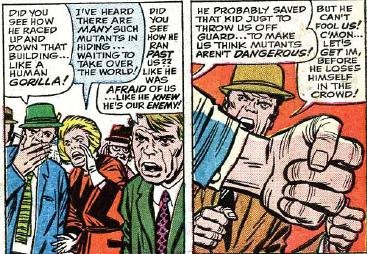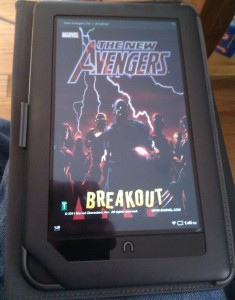
Look out! Next he'll be after your wimmenz!
Saw this over at
The Mary Sue – did you know that, once upon a time, Marvel’s own lawyers tried to legally prove that
the X-Men weren’t actually human? It’s true! Despite being founded upon the theme that no matter how different we may seem from one another, whether it’s blasting lasers out of our eyes, phasing through walls, or sucking the life force out of you with a kiss, humanity can be found within each of us. That is, of course, unless Marvel’s lawyers have decided that, when marketing a likeness of you for little children to play with that it would be cheaper for tax purposes that you not be human, writes
Susana Polo
Sherry Singer and Indie Sing were the two international trade lawyers working for Marvel Comics in the ’90s (and they were ladies, we feel obligated to mention by the mandate of the site), who took a look at the Harmonized Tariff Schedule, a book full of customs regulations, and realized that “dolls” were taxed 12% on import, while “toys” were taxed only 6.8%. The difference between the two was that a doll “represented only a human being,” while “toys” were ”monsters, robots, angels, basically anything that isn’t “only representing a human.” Probably, at some point in the past, some American doll manufacturer had felt threatened by overseas competition, and had lobbied the government to put a tax on imported dolls.
There’s also a link at The Mary Sue to a podcast that explains how the case turned out, so click on over there to find out the resolution.


 Podcast RSS Feed
Podcast RSS Feed iTunes
iTunes Google Play
Google Play Stitcher
Stitcher TuneIn Radio
TuneIn Radio Android
Android Miro Media Player
Miro Media Player Comics Podcast Network
Comics Podcast Network